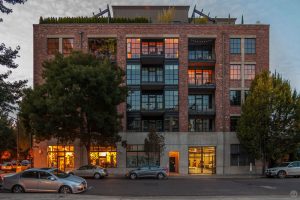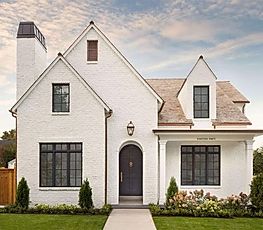
Housing Choice and Housing Affordability at all price points are not exactly the same thing, but they are integrally linked. I use both phrases often and recognize that it sometimes sounds as though they are interchangeable. It's important to recognize some subtle and not-so-subtle differences.
Housing Choice is the opportunity for the market (for-profit, non-profit, governmental organizations and individuals) to build, rent and occupy a diverse range of housing types with a variety of price points. Each housing type and price point is expected to offer both benefits and drawbacks. Large homes with big yards and fancy finishes are probably going to be more expensive, but they also give families the opportunity to stretch out and spend their income with local contractors and businesses. Smaller homes (like cottages, apartments, condos, townhomes and accessory dwelling units) may have less space or plainer finishes, but they also offer families the choice to save for college or retirement, travel more, or tithe to an important community need.
So, Housing Choice references the amount of housing that is available and the different kinds of housing that can be found to satisfy a variety of household needs and desires in any community. Housing Affordability, on the other hand, references the amount of money that a given household will spend on their housing relative to their income. As discussed in more detail in a previous post, the general rule of thumb is that no one should be spending more than 30% of their gross income on housing related expenses each year.
The theory goes that, with enough overall supply and choices in the market relative to the number of households, the market will find some balance and we will achieve housing affordability at all price points. Housing Choice leads to more affordability... eventually.
 This is the important difference. Housing Choice, by itself, is not enough to achieve affordability at all price points in the short term. It is a means to an end and it is a long game approach. If we build enough choice into the market over a long enough period of time, we would ultimately achieve a balance in the market. When consumers have enough choices in the market, sellers and landlords have no choice but to compete to offer the best value - either through improved amenities or a reduction in price, or both. We would call this a renters market or a buyers market. Something we haven't seen in most of West Michigan since 2011.
This is the important difference. Housing Choice, by itself, is not enough to achieve affordability at all price points in the short term. It is a means to an end and it is a long game approach. If we build enough choice into the market over a long enough period of time, we would ultimately achieve a balance in the market. When consumers have enough choices in the market, sellers and landlords have no choice but to compete to offer the best value - either through improved amenities or a reduction in price, or both. We would call this a renters market or a buyers market. Something we haven't seen in most of West Michigan since 2011.
What's important about this basic principle of economics is that new supply does not get built in a matter of weeks or months, and since 2008 it has not been particularly easy to finance the construction of new housing. It will take us years - likely a decade or more - to build enough housing supply to satisfy current market demand, and this assumes that the local and national economy are able to keep chugging along without another recession. The other critical element to remember is that new construction continues to rise in cost more quickly than do average wages nationwide and locally.
As covered in detail within the United Way Community Assessment and the Ottawa County Housing Needs Assessment. We know that our current housing market is under supplied by more than 7,000 homes. This includes both small and inexpensive housing as well as fancy and very expensive housing. We don't currently have enough of any of it in Ottawa County. As a result, those with the greatest ability to pay are winning the game of housing musical chairs. Furthermore, the housing market in Ottawa County does not exist in a vacuum. Our market is integrally linked to the housing market in Kent, Muskegon and Allegan Counties, as well as the broader West Michigan region as a whole. We cannot simply solve for the missing 7,000 units locally and assume that supply and demand in our surrounding counties will not also effect prices closer to home.
Most importantly, our Housing Needs Assessment has demonstrated a critical need for more housing that is priced below $625 per month. This is a price point that can rarely be achieved with new construction and traditional financing in the current market. Assuming an average cost of $150 per square foot to build new housing product, the only new housing that can be built for an average monthly rent of $625 would be 500 sq ft or less. This could be a perfect solution for single adults without children and we should definitely build a lot more of this product in the short term. However, this is not a solution for a single mother with children living at home, or multi-generational family caring for an aging parent.
In the short and medium term, if we are going to truly achieve housing affordability at all price points, we must not only integrate a whole lot more housing choice into our current market, but we must also look for ways to reduce the cost of housing with creative financing, improved land use policy and innovation in the construction sector. And, for an increasing number of households, there is no way to achieve a truly affordable option without leveraging some form of housing subsidy to bridge the gap between that household's monthly earnings and the real cost to build, operate and maintain their housing.
Across West Michigan, we pride ourselves on a collaborative approach to problem solving and a willingness to roll up our sleeves and do the hard work necessary. Often times, we devise extraordinary solutions that have proven to be improbable in other regions. That same spirit of collaborative, systems-oriented solution making is needed now. The next few posts in this series will focus on some of the endeavors we view as critical to solving for housing choice and affordability at all price points.
